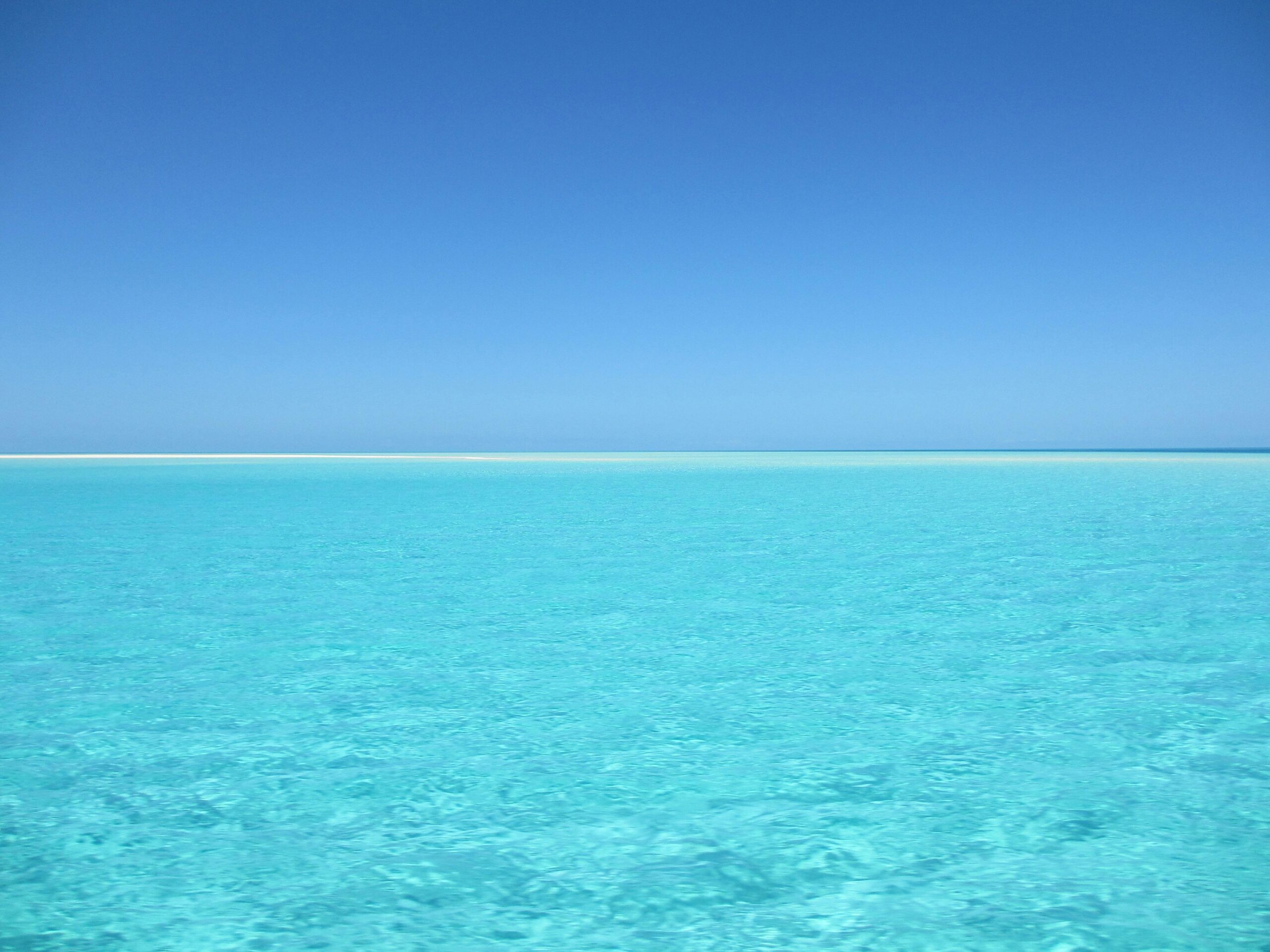The Simple Answer: Water Looks Blue Because It Absorbs Red Light
Light from the sun is made up of different colors: red, orange, yellow, green, blue, indigo, and violet. These colors together make what we call white light. When sunlight hits the surface of the water, most of the light penetrates it. But something interesting happens inside the water: water molecules absorb the red, orange, and yellow parts of the light spectrum more strongly than the blue part.
That means the red light is absorbed and disappears first as light travels deeper into the water. The blue light, which is less absorbed, gets reflected back to our eyes. This is why large bodies of water look blue — because blue is the color that survives and reflects back to you.
Why Doesn’t a Glass of Water Look Blue?
When you pour water into a small glass, it looks completely clear. That’s because the amount of water is too small to absorb enough light for your eyes to notice any color change. The blue color of water becomes visible only when you have a large volume of water, such as in a swimming pool, a lake, or the ocean.
So, it’s not that the water changes color in different containers — it’s that our eyes need a lot of water in one place to detect the subtle blue color caused by light absorption.
Not Just Reflection of the Sky (A Common Myth)
Many people believe that water looks blue because it reflects the color of the sky. That is partly true but not the main reason. If that were the only reason, then water would always look gray on a cloudy day or black at night — and that’s not always the case.
Reflection of the sky does influence the appearance of water on the surface, especially on calm days. But the inherent blue color of water comes from the way it interacts with light deep inside it. This is a scientific fact confirmed through laboratory experiments with pure water, away from any sky reflection.
The Role of Depth and Purity
- Depth: The deeper the water, the more pronounced the blue color becomes. In very deep oceans or mountain lakes, you may notice a rich, deep blue shade.
- Purity: Pure water shows its true blue color more clearly. When there are impurities, sediments, or algae, water may appear green, brown, or gray instead.
In tropical areas, for example, water may appear turquoise or aquamarine because of a combination of white sandy bottoms, green algae, and shallow clear water reflecting light in various ways.
What About Swimming Pools?
You might have noticed that swimming pools often look blue, even though the tiles are white. This is also because of how light behaves in water. The water absorbs the warmer colors (like red and orange), leaving the cool colors like blue. Even artificial light in indoor pools can cause this effect. Plus, the white surfaces of the pool reflect that remaining blue light, making it even more visible.
Can Water Be Other Colors?
Yes! Water can look green, brown, or even red under certain conditions:
- Green: Caused by algae, plant matter, or mixing of blue water with yellowish particles.
- Brown or muddy: When water is full of sediments, like in rivers after heavy rain or in wetlands.
- Red or pink: Rare, but can occur due to certain types of algae (like in Australia’s famous pink lakes).
So, while pure water is inherently blue, its actual appearance can be affected by what’s in it and what’s around it.
A Summary for Easy Understanding
Let’s sum up the key points in simple terms:
- Water looks blue mainly because it absorbs red light more than blue light.
- The blue light gets reflected back to your eyes, making large amounts of water appear blue.
- Sky reflection adds to the effect but is not the main reason.
- You need a large volume of water to see the blue color — small amounts look clear.
- Impurities and depth can change the color you see, sometimes making it green, brown, or other shades.
Fun Fact
If you were to dive underwater and use a flashlight, you’d notice that red colors disappear first the deeper you go. That’s because red light is absorbed quickly by water. Divers often carry lights that can bring back the full spectrum of colors underwater.
Final Thoughts
Water’s blue color is a beautiful example of how nature and science work together in fascinating ways. Even something as simple as a splash of water can tell us about the physics of light, the structure of molecules, and the beauty of our environment. Next time you gaze out at a shimmering blue lake or a sparkling ocean, you’ll know that the color you see is a result of real science happening right before your eyes.
Understanding why water looks blue is just one of the many wonders of the natural world that science helps explain — and it makes you appreciate the little things even more.







Leave a Reply